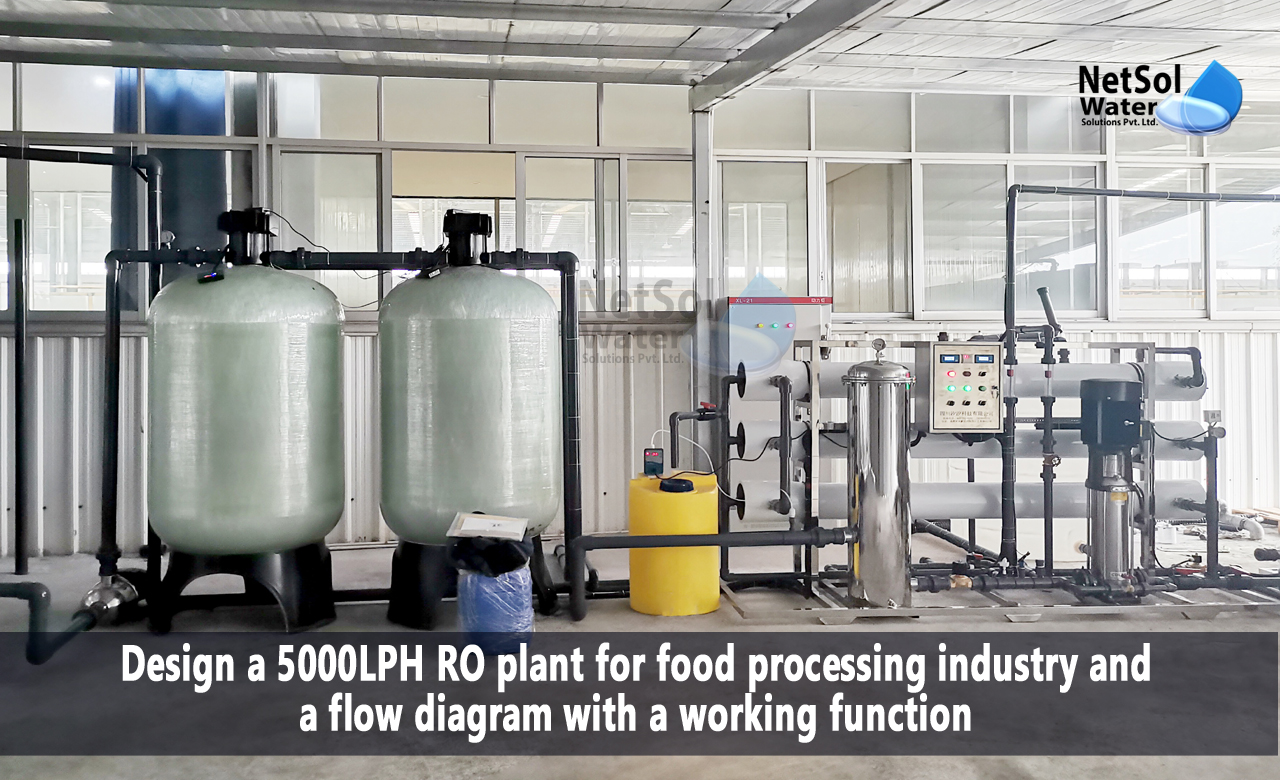Design a 5000LPH RO plant for the food processing industry
Reverse osmosis (RO) is an effective water treatment technology used in various industries, including the food processing industry. RO is used to remove dissolved solids, impurities, and other contaminants from water to make it suitable for various processes, including food and beverage production.
In this blog, we will design a 5000LPH RO plant for the food processing industry and share the design basis process flow diagram and working function in detail.
Design Basis
The design basis for the 5000LPH RO plant is as follows:
Feed Water: The feed water for the RO plant is ground water with a total dissolved solids (TDS) level of 5000 ppm.
Product Water: The product water for the RO plant should have a TDS level of less than 50 ppm.
Recovery: The recovery of the RO plant is assumed to be 75%.
Feed Water Temperature: The feed water temperature is assumed to be 25°C.
Process Flow Diagram
The process flow diagram for the 5000LPH RO plant is as follows:

Working Function
The working function of the 5000LPH RO plant is as follows:
- Feed Water Tank: The ground water is stored in a feed water tank before being pumped to the RO plant.
- Feed Water Pump: The feed water pump is used to pump the feed water from the feed water tank to the RO plant.
- Pre-treatment: The feed water is pre-treated to remove any suspended solids, colloids, and organic matter before entering the RO plant.
a. Sand Filter: The sand filter is used to remove any suspended solids and colloids in the feed water.
b. Activated Carbon Filter: The activated carbon filter is used to remove any organic matter and chlorine in the feed water.
c. Antiscalant Dosing: The antiscalant dosing is used to prevent scaling on the RO membranes.
- RO Plant: The feed water is pressurized using the high-pressure pump and then passed through the RO membranes under pressure. The RO membranes remove dissolved solids and impurities from the feed water to produce product water.
a. High-Pressure Pump: The high-pressure pump is used to pressurize the feed water before entering the RO membranes.
b. RO Membranes: The RO membranes are made up of thin sheets of semi-permeable material that allow water molecules to pass through while blocking the passage of dissolved solids and impurities. The feed water is passed through the RO membranes under high pressure, and the product water is collected on the other side of the membranes.
c. Permeate Pump: The permeate pump is used to transfer the product water from the RO plant to the product water tank.
- Product Water Tank: The product water is stored in a product water tank before being used in the food processing industry.
The RO plant works on the principle of pressure-driven separation, where the dissolved solids and impurities in the feed water are separated from the water molecules under high pressure. The pre-treatment steps help to remove any suspended solids, colloids, and organic matter from the feed water, which can clog the RO membranes and reduce their efficiency. The antiscalant dosing helps to prevent scaling on the RO membranes, which can lead to reduced product water quality and membrane damage.
Conclusion
In conclusion, the design of a 5000LPH RO plant for the food processing industry requires careful consideration of the feed water quality, product water requirements, and recovery rate. The process flow diagram and working function of the RO plant are essential for understanding the different steps involved in the RO process and the role of each component in producing high-quality product water. The RO plant is an essential water treatment technology for the food processing industry, ensuring that the water used in the production process is free from impurities and contaminants.
For any other support, inquiries, or product purchases, call on +91-9650608473 or email at enquiry@netsolwater.com



